Hamish Bowles Sambas His Way Through Rio de Janeiro’s Carnaval
Hamish Bowles Sambas His Way Through Rio de Janeiro’s Carnaval


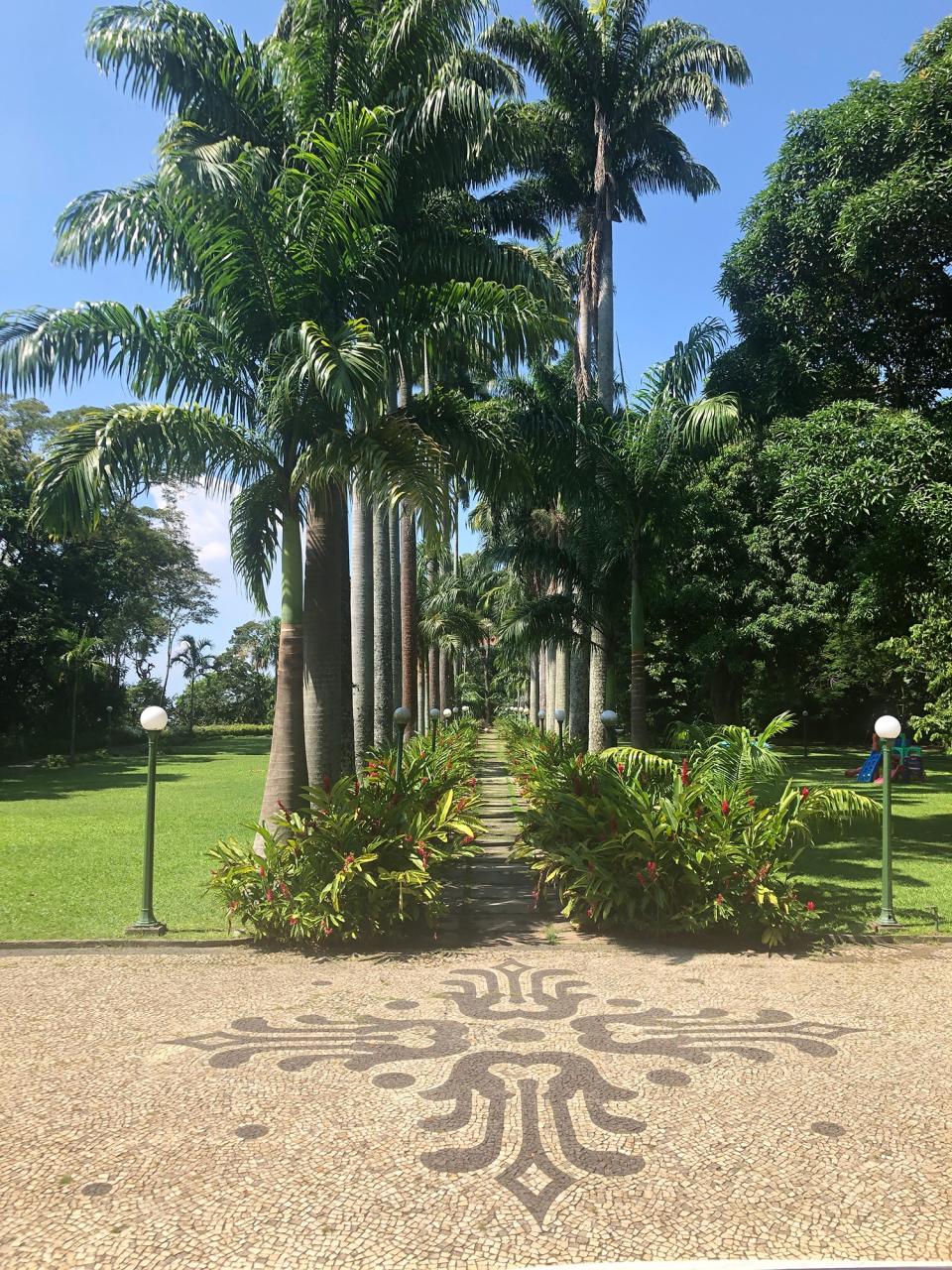
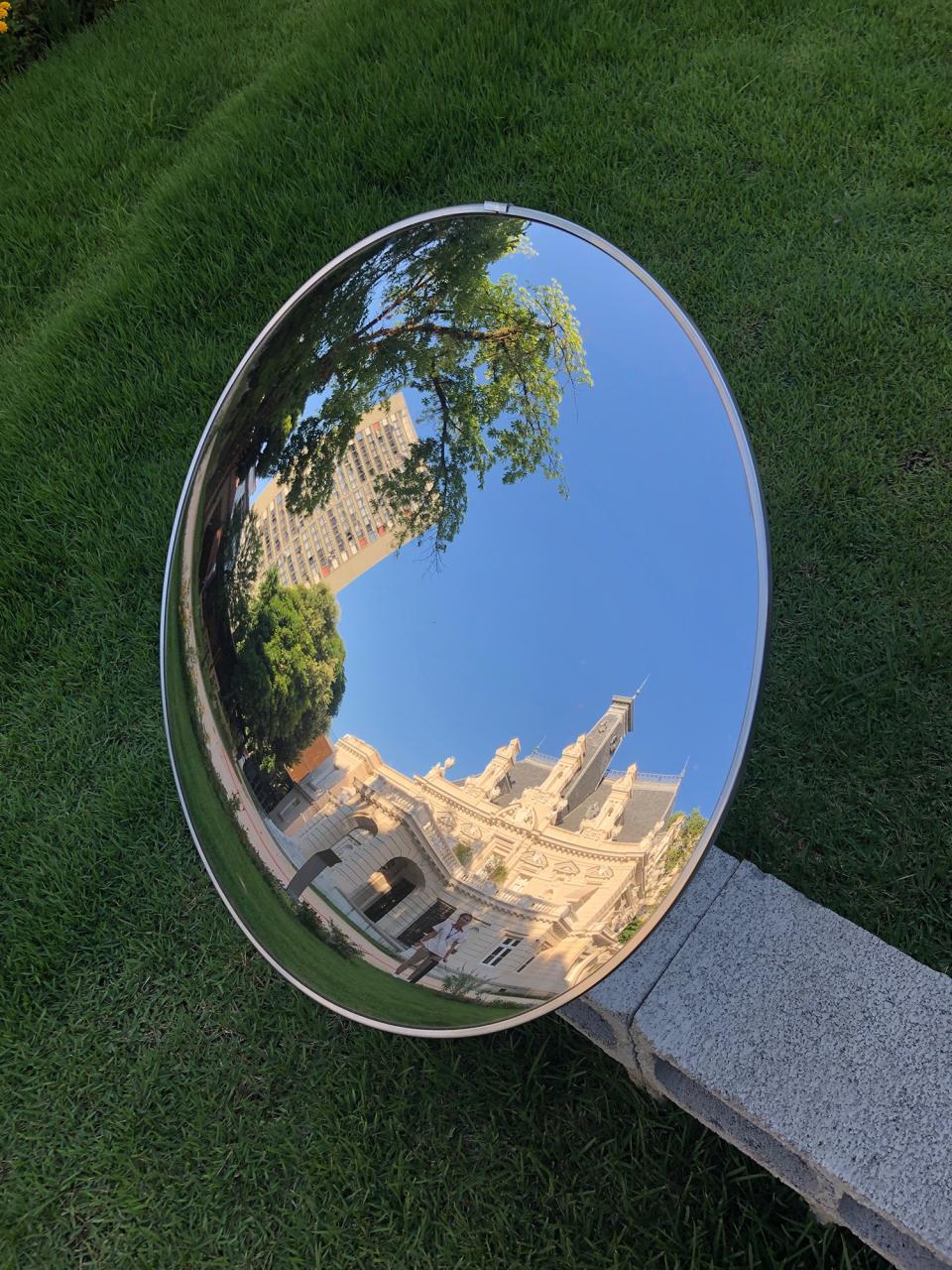
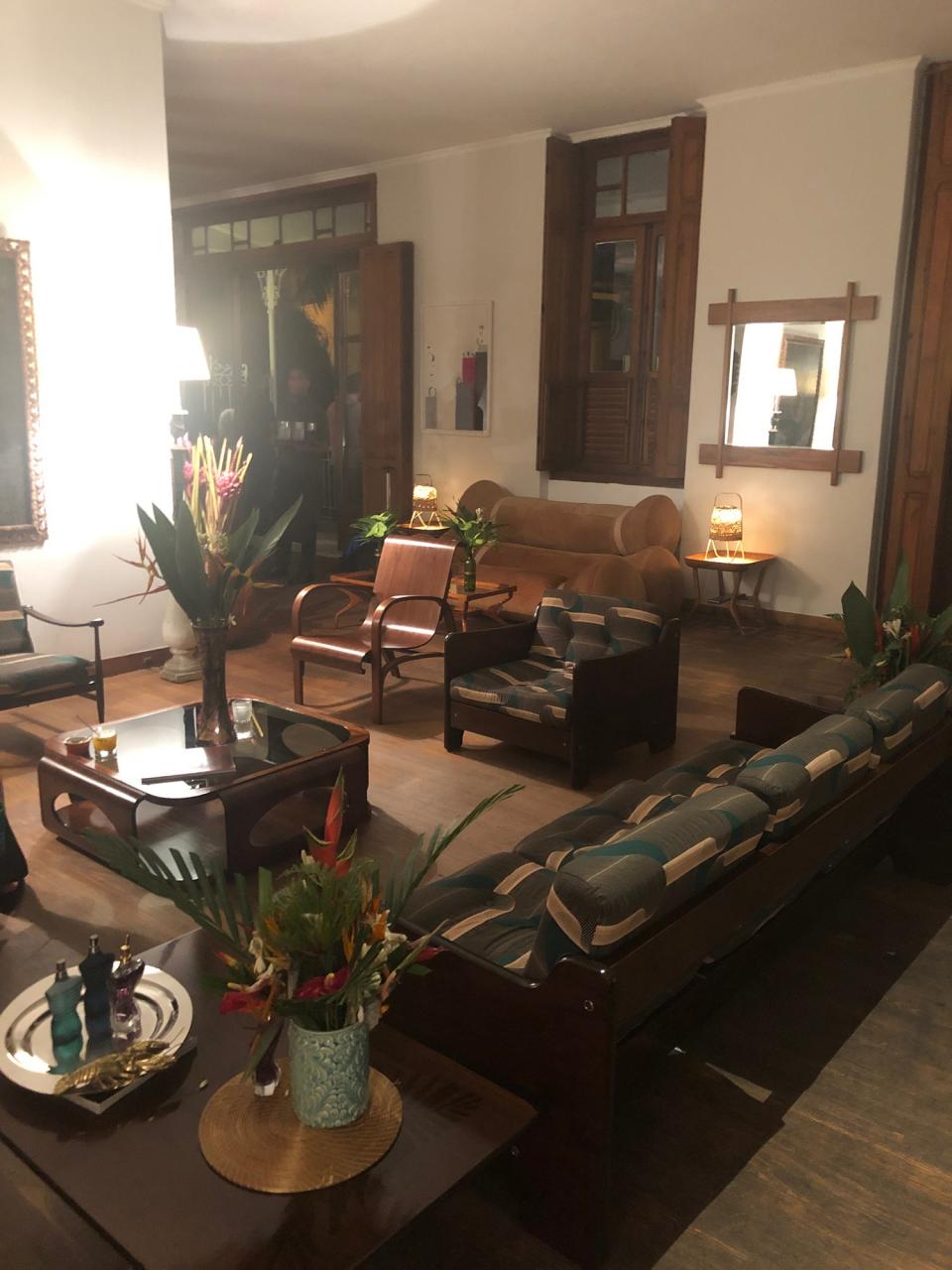
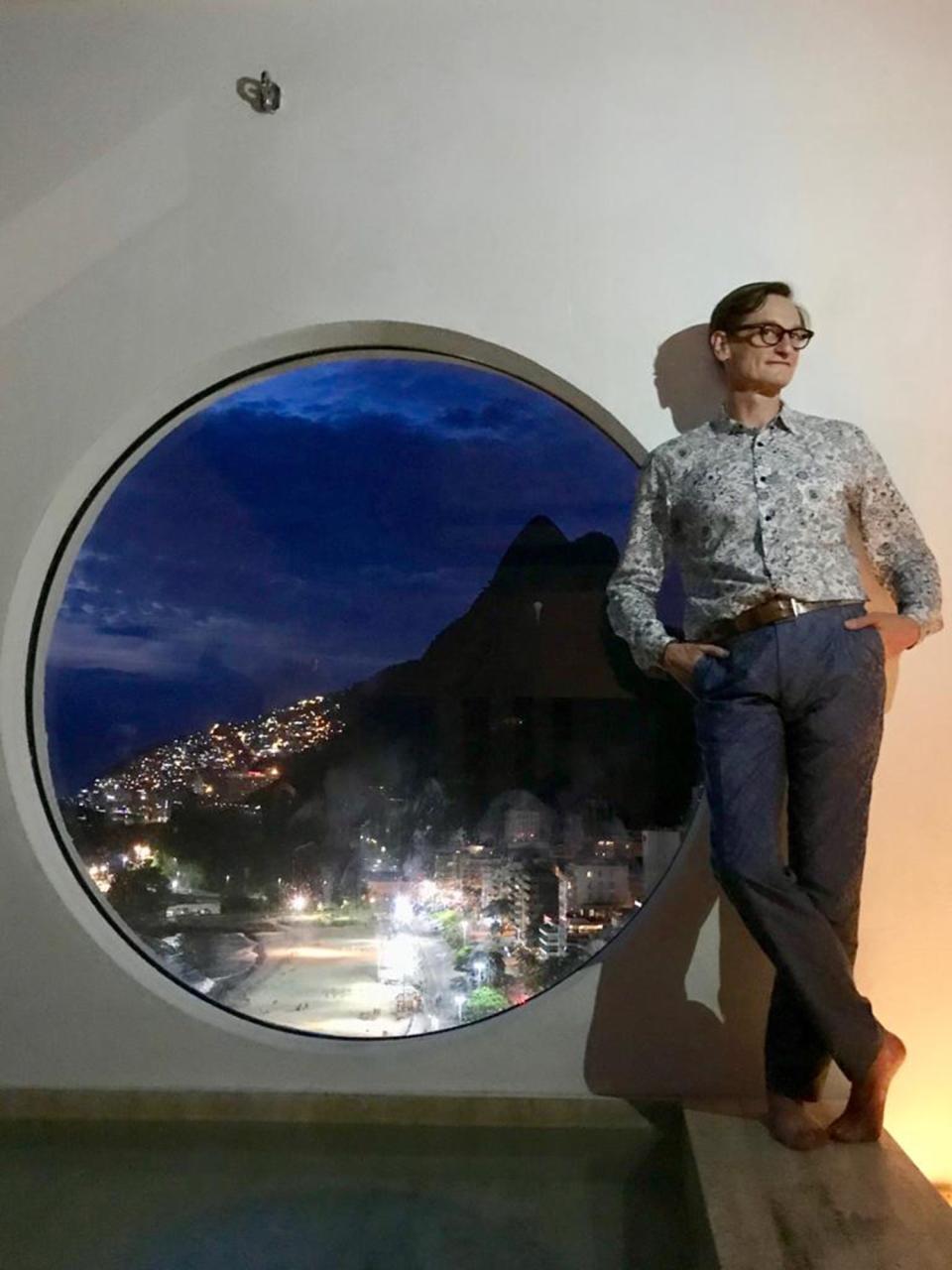
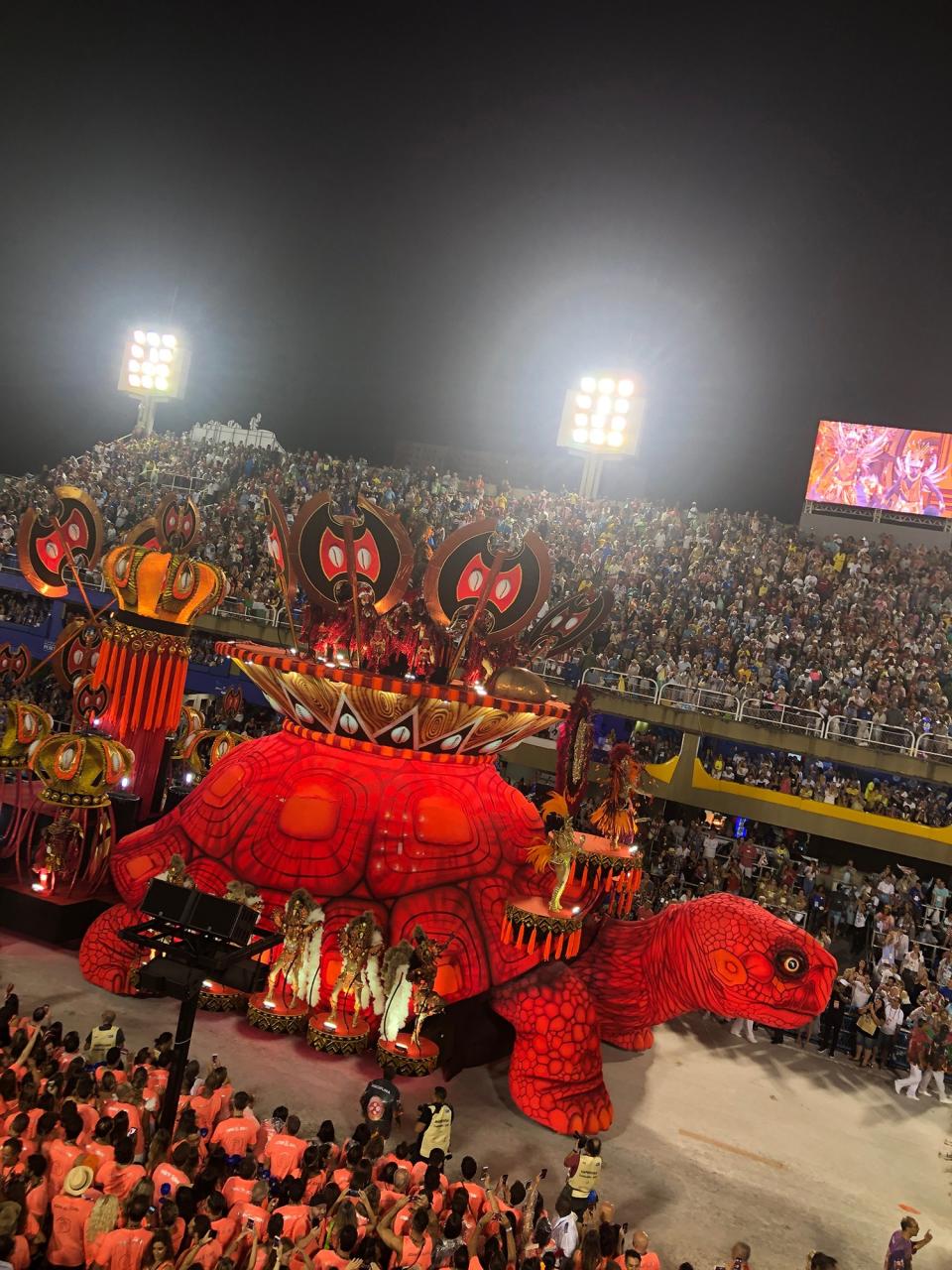
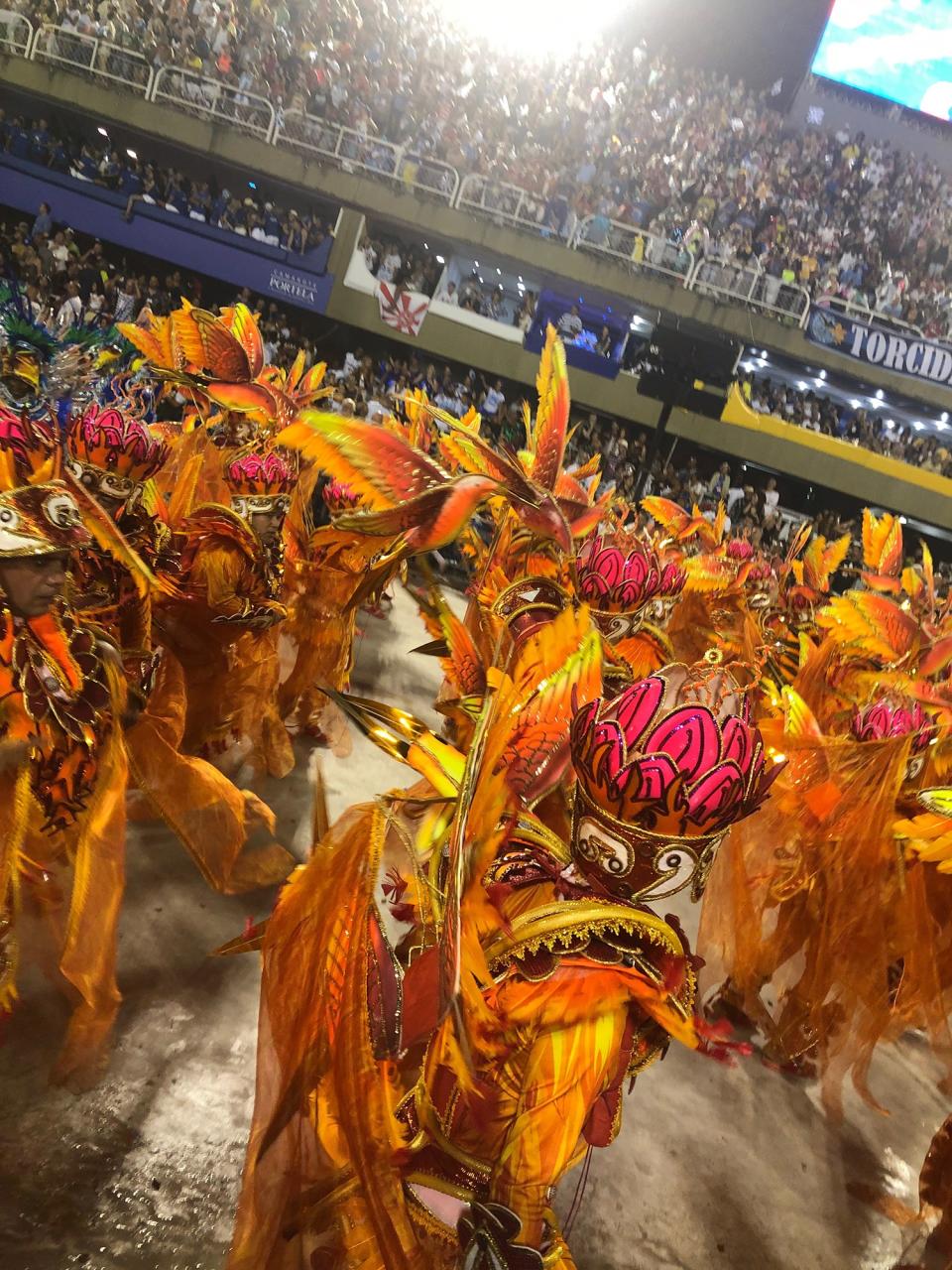

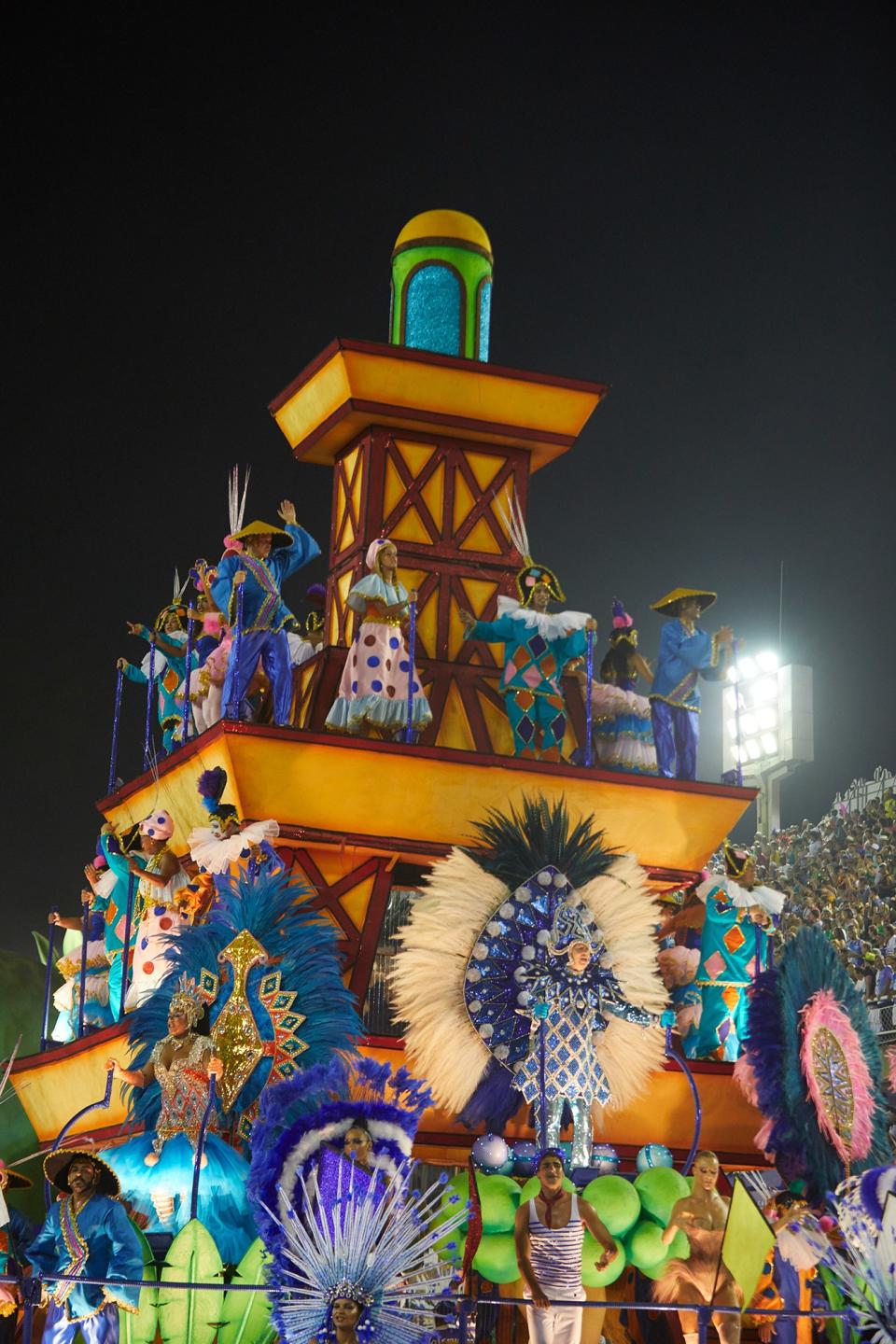
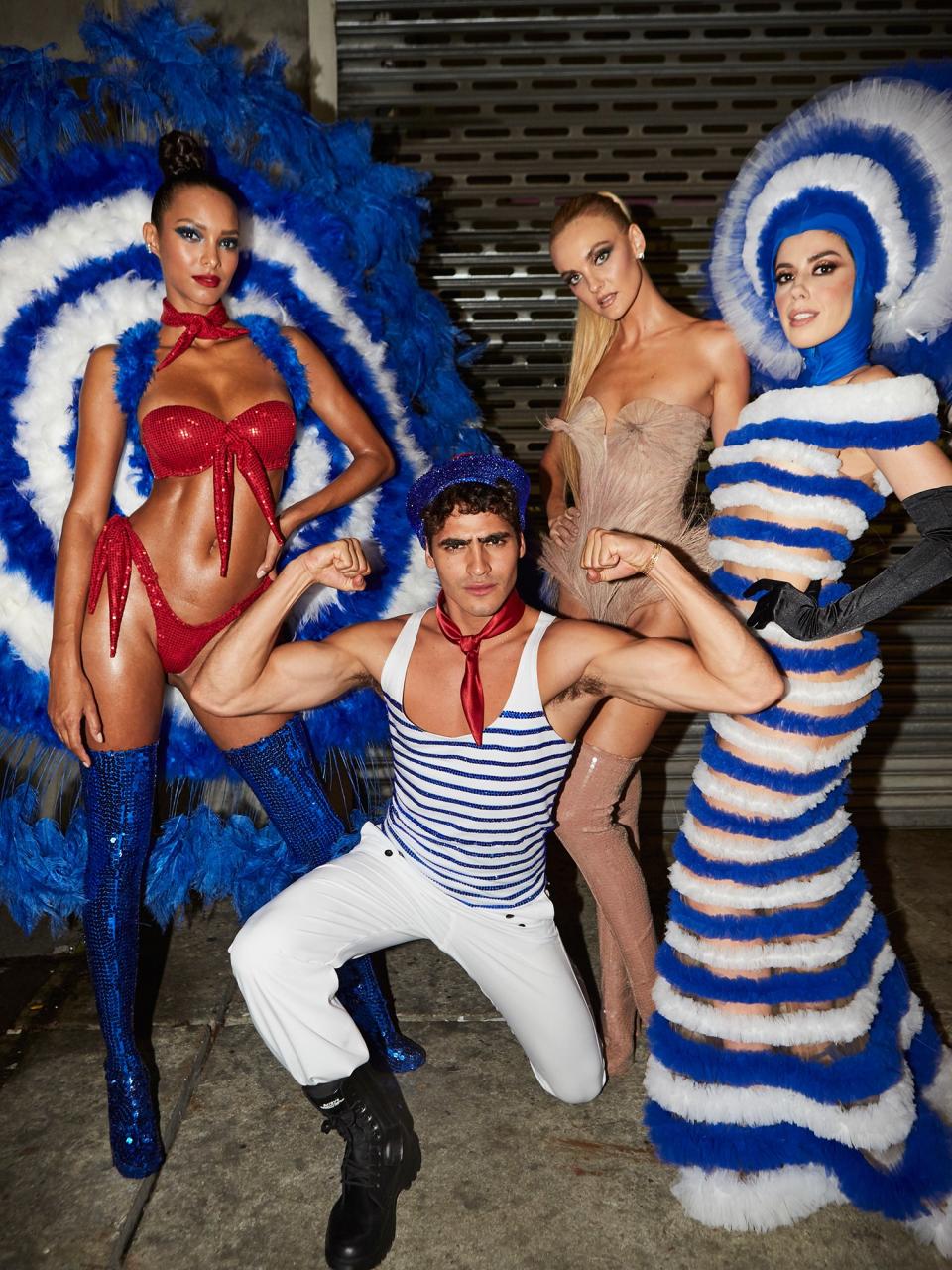

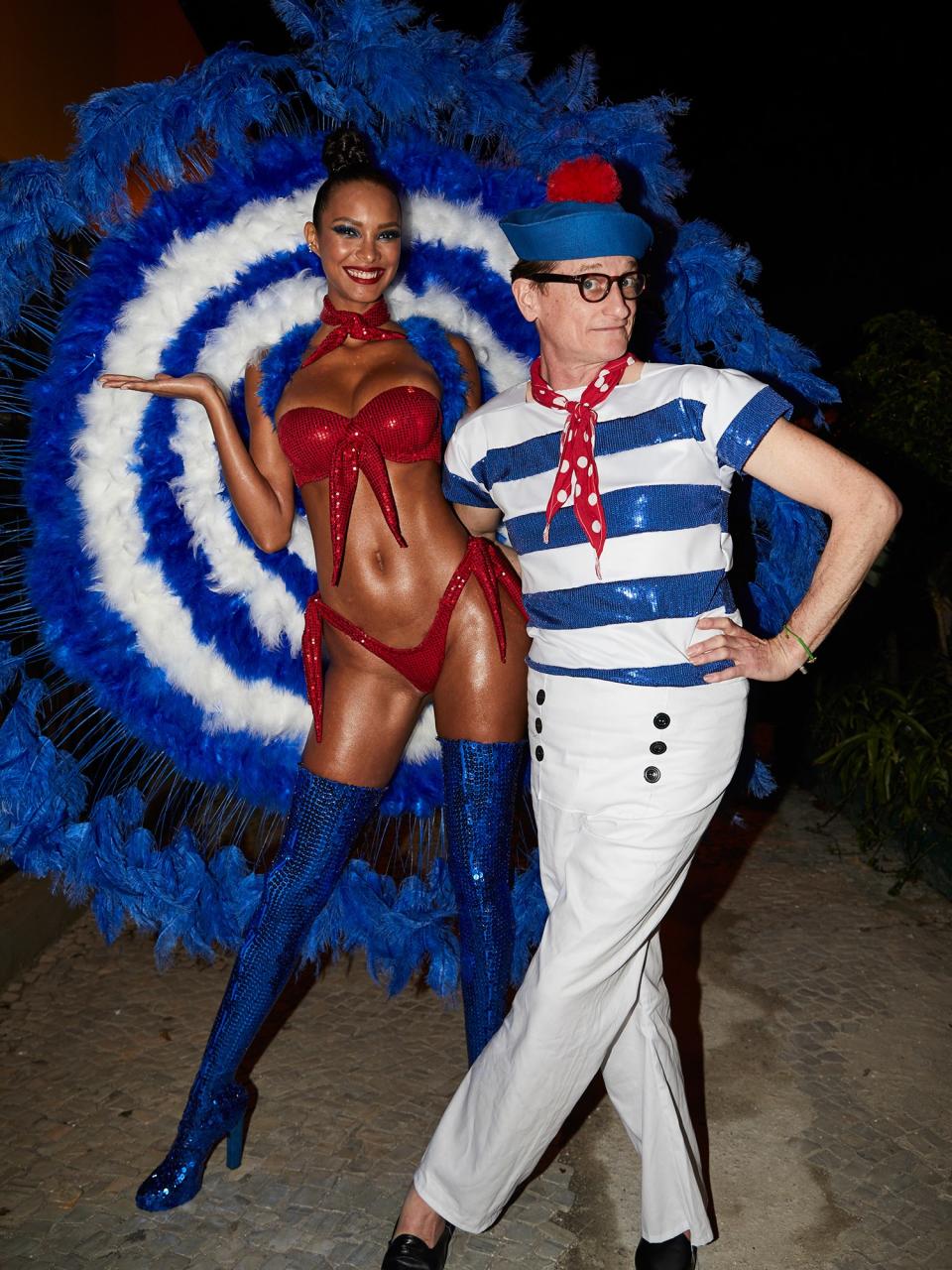
I have never been to the famed Carnaval in Rio, as the dates always collide with the Paris collections, but the idea of it has cast a mythic spell ever since the glamorous Swiss nightclub divas Gerlinde Kostiff and Susanne Bartsch returned to ‘80s London clubland aswoon with stories of its wonders.
This season, however, I missed the Paris shows, and as I lay slumped over my laptop in Manhattan wracked with FOMO, a lightbulb exploded in my enfeebled brain as I realized that Rio’s Carnaval celebrations were getting underway. And when I discovered that the Riophile Jean Paul Gaultier—who first came to Brazil in the early ‘80s—was involved in costuming and sponsoring the famed Portela Samba School (the first time an international designer has been asked to do so), I thought the opportunity to join the fun was too good to miss.
And so it was that I lighted in that sultry, sun-washed city from Manhattan’s stygian gloom and was soon blissfully ensconced at the Janeiro Hotel on Leblon’s sea-licked coast in an amazing room that framed a view of the Cagarras Islands—the first serendipity of many in the days to follow, and a Zen-like sanctuary from the Carnaval madness already in full fig on the Burle Marx-designed sidewalks outside.
The Janeiro Hotel, which opens officially next month, is the brainchild of designer Oskar Metsavaht—whose fashion brand, Osklen, was built on the concept of sustainability and “new luxury” decades before they became industry buzzwords, and who is now the creative director of OM.art. Built in 1975, when this area of Rio’s famed coastline was being developed into luxury apartment buildings to replace the Beaux Arts villas built at the turn of the last century, the Janeiro has been reconceived to embrace Metsavaht’s philosophies and exemplify his values.
Sustainable green initiatives run the gamut from innovations in central air and sanitation to the delicious farm-to-table food by che Daniel Pinho; cabinets are made from sustainably harvested Freijo wood and the bedside lamps are made of recycled glass. Metsavaht is also working on an initiative to nurture the wild plants that once flourished on the city’s famed beaches.
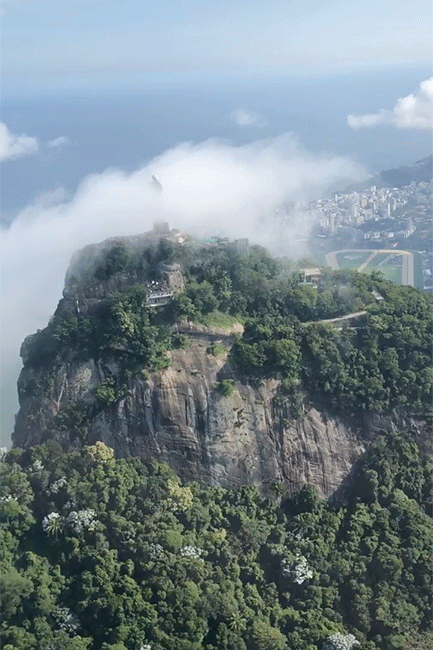
That evening, thanks to the indefatigable Rodrigo Garcia Alvarez, I headed to Camarote Numero 1 for a prime viewing spot of the annual Samba School parade at the Sambadrome Marquês de Sapucaí. This impressive concourse was designed specifically for this annual blockbuster by the country’s famed architect Oscar Niemeyer, whose curvaceous, sculptural buildings pulse with sensual glamour and a spirit of mid-century optimism. The structure—with a seating capacity for 90,000 people—was commissioned by Governor Leonel Brizola in the spirit of socialismo moreno (multicultural socialism) and completed by Niemeyer when he returned from self-imposed exile after the fall of the country’s military dictatorship, which had lasted from 1964 to 1985. The elegant, gravity-defying triumphal arches he conceived at the end of the half-mile-long parade grounds are said to have been inspired by the curves of a woman’s buttocks—a characteristic Niemeyer flourish. In 2012, the indefatigable architect expanded the complex to seat a further 18,000 people (and gamely attended the opening at the tender age of 104).
I am not sure quite what I was expecting from this most official part of the Carnaval celebrations, but absolutely nothing could have prepared me for what I saw. The second tier schools had paraded earlier, but on this night and the following, each of the competing first division samba schools fielded some 5,000 members, each dressed in the most elaborate costumes, walking in choreographed movement and singing their respective school’s stirring and hypnotic songs, composed and written specially for the occasion. There were flamboyant carnival kings and queens who swirled around making courtly gestures, the queen dressed in a vast crinoline of plumes, and the fantastically limber rainha de bateria (queen of the drums) who managed to dance a high-energy samba for over an hour on vertiginous heels. There was also the Ala das baianas—hundreds of mostly elderly women from the samba school’s community—dressed to honor the Bahaian slaves whose African traditions are deeply embedded in Brazil and in the DNA of the Carnaval.
There is a general or specific theme for each school’s entry, some of them not that easy to grasp—one was “money,” reflecting the country’s precarious economy and the budget cuts that have been made to the samba schools; another was “fairy tales,” as in the stories told by grandparents to their grandchildren; whilst a third seemed to be “pollution”—and in-house creative directors responsible for the choreography and the aesthetics of floats and costumes. (The Carnaval has also been a forum for protest—perhaps never more so than now, when Brazil finds itself in the thrall of an extreme right-wing president, Jair Bolsanaro, who has made no secret of his loathing for the country’s Afro-Brazilian and LGBT communities and who was evidently infuriated by the anti-government tone of the revelers, some of whom carried banners calling for his impeachment. His “presidential” tweets about the parade are not printable here.)
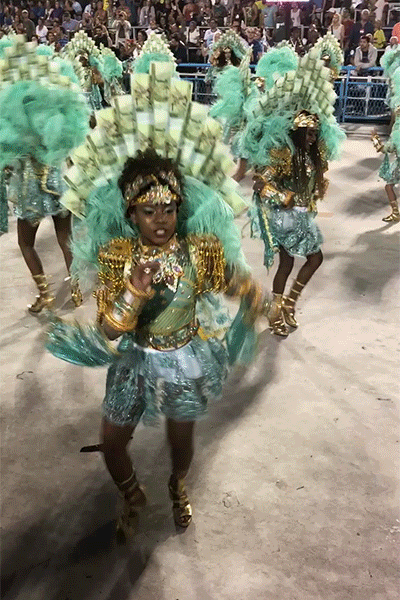
As soon as the first contestants appeared—chess pieces, as it happens—I was hooked. The eye-poppingly imaginative costumes and the energy and love shown by 90,000 spectators mirrors the adrenaline of the runway. There is nothing to match the brilliance of the costumes, the floats, the humor, the drama, and the almost otherworldly celebration of this country’s vibrant diversity. It is the most inclusional spectacle imaginable, embracing all races, ages, genders, and sexual orientations.
From the camarote, one can choose to view the spectacle from above to embrace its epic sweep—by the time the first float has reached the end, the school’s last members will be entering the stadium half a mile behind them—or race up close to viscerally feel the energy of the contestants and the power of the legendary drum sections.
By the time the final school of the day paraded, dawn had broken over their bread-themed promenade, which featured the unlikely juxtaposition of a vastly overscaled Last Supper tableaux, twirling pastries, and a peacock garden (the bird, as I discovered, being that school’s spirit animal).
It must have been seven in the morning by the time I wended my weary way back to the Janeiro, where I was delighted to discover that the day’s schedule included samba lessons. I also received the spine-tingling news that Jean Paul Gaultier had not only provided accreditation and the requisite T-shirts for the camarote for the night’s parade, but also a costume—should one want to walk with the famed Portela school, for which he had designed a tableau in the school’s colors of blue and white.
Thus it was that in a ballroom at the storied Copacabana Palace later that day I attempted to follow the inspirational moves of the samba school teachers. It was painfully obvious that I was never going to hold my own against the school’s members, who practice relentlessly throughout the year, but at least I knew that my Gaultier-designed matelot ensemble of white and blue sequin stripes—and a kiss-me-quick hat with a red tulle pompom—would distract from my inept footwork.
Later that afternoon, designer Alix Duvernoy bade me join her at one of the bloco street parties that ignite the city on carnival days. These can be epic events with thousands upon thousands in attendance, each in their own inventive costumes, but this one was newly created and intimate. A samba band began by playing in and around a delightful old-fashioned bandshell in the Praca Harmonica, a picturesque town square shaded by flame trees, and then led the fun boho crowd through the cobbled lanes with a strange poetry all its own.
Later that evening, it was back to the Copacabana to get into costume and rush off to the Sambadrome way across town. The beauteous, thick-browed Jhona Burjack, dressed in the couture version of my matelot look, was joined by it girl Camila Coutinho in a blue and white stripe tulle gown adapted from an iconic Gaultier haute couture dress, Caroline Trentini (my onetime Met Gala date) dressed in a bristle of coconut fronds, and Lais Ribero in a Moulin Rouge bullseye of feathers—soon they would all be dancing on a float based on the Eiffel Tower as depicted by the great Brazilian pre-war artist Tarsila do Amaral (whose sui generis works were recently showcased in a show at MoMA.
The Portela school’s parade was inspired by the celebrated Clara Nunes (known as Guerrera, or warrior), who is widely credited with bringing the samba traditions out of the favelas and into the mainstream. Portela’s Carnavalesca (creative director) Rosa Magalhães designed the floats and costumes to illustrate Nunes’ early life working in a textile factory, her relationship with Portela, and her travels to Africa to investigate the roots of Samba tradition. Gaultier likens the samba school’s creative work to a fashion designer’s—both work intensively for six months for a few minutes in the spotlight.
The activity in the streets that form the backstage was frenetic as the samba school members got into their elaborate costumes and I tried to calm my first night nerves. Eventually, floats slowly heaved into place—the one preceding ours a jungle of giant chirruping hummingbirds with costumed participants placed high amongst them.
A martinet samba school organizer shouted instructions at us to make sure we kept in strict formation, each an arm’s width from the next: She was taking no prisoners. And then the hummingbird float turned into the Sambadrome and we followed. It is difficult to describe the effect of 90,000 people cheering you on from the stands and the pulsing energy that surrounds you, but I can safely say that it seemed like a once in a lifetime thrill—and only when we had reached Nieymeyer’s curvaceous arches did I discover that I had been frantically sambaing for nigh on an hour and a half.
To maintain the high, I took a helicopter ride the following day with the Gaultier crew, swooping in over green jungled hills to see the beauty of Rio spread below—lake, hilltops, curving bays—and we encircled Paul Landowski’s astonishing 1931 statue of Christ the Redeemer, icon of the city, crowning the Corcovado mountain and wreathed in clouds.

That evening we hied to Santa Teresa, the Sintra of Rio, to the delightful boutique hotel Mama Ruisa, run by Jean Michel Ruis in a high-ceilinged 1871 mansion, where we spritzed with a limited edition of Gaultier’s appropriately festive “classique” Cabaret fragrance and were ministered to by make-up artists to flourish our costumes. Thence up the hill to another amazing colonial house for the costumed Arara Ball, the brainchild of Pedro Igor Alcantara and Malu Barreto (wife of the celebrated artist Vik Muniz) of the Arara creative agency. Here we were serenaded by some of the best samba musicians and singers in town, and by DJ Gaspar Muniz (son of Vic). The party closed in the most stylish and poetic way imaginable when a samba brass band—playing covers of Britney, Madonna, et al—led the guests out onto the veranda and then down the steps and onto terraces and on through the entrance gates and into an impromptu bloco that ended in a local children’s playground as the bright dawn rose and the band played “Hallelujah.” Sheer magic.
On the morrow I woke to the exciting news that my deathless dance moves had made the Globo TV news—at least if you didn’t blink—and that Portela had placed in the competition, meaning that they would parade again in the March of Champions on Saturday night. This time I thought I might watch it from the camarote.
Meanwhile I went to explore the city, lunching at Casa Firjan, a wonderful Beaux Arts villa built by the French architect Joseph Gire in 1910 (Gire also designed the Copacabana Palace hotel), and took a tour of a palatial neoclassical Deco residence on a hilltop of Santa Teresa—one still appointed with many of the Lalique lamps and Parisian designer furnishings originally supplied for it.
On Friday night, Metsavaht and his wife Nazaré threw a wonderful dinner for me with the fun creatives in town—singer Bebel Gilberto, Vik and Malu Muniz, Brazilian Vogue’s Daniela Falcão, and the chic swimwear designer Lenny Niemeyer among them—at their beautiful apartment in Arpoador with views across the palms and the lapping waves.
The following night, my resolve crumbled and I decided that I couldn’t miss walking in the parade once more. At dusk, the Gaultier matelots convened at the Small Pool Bar and Terrace of the Janeiro, where we were serenaded by no less a figure than master DJ Guy Gerber to get us all in the mood, which he certainly did.
Thence it was back to the Sambodrome. This time around, the intense competitive atmosphere had evaporated and the spirit was completely different: If we were all ship-shape and ready for inspection on Monday night, this time we resembled drunken sailors on shore leave. It couldn’t have been more fun.
I had also missed the winning entry—the samba school Mangueira, walking last in the evening—so it was back to the camarote to take in their competition entry. Parading under a flag that read “Indigenous, Black, Poor,” Mangueira’s walk was dedicated to figures of social change in Brazil, including the Afro-Brazilian freedom fighter Luiza Mahin, a freed slave who helped to organize the enslaved peoples’s uprisings in Bahia in the 1830s; her son Luis Gama, the poet, lawyer, and abolitionist; and Marielle Franco, the Brazilian councilwoman and human rights and LGBT activist who was an outspoken critic of police brutality, who was assassinated last year. Her widow, Mônica Benício, walked in the parade. (Two former police officers were arrested in connection with her murder on March 12th.)
It was impossible not to be stirred, and as the final flags of the parade marched past, swirling in the breeze with images of these heroes of resistance and positive change—and carried with joy—I was moved to tears.

